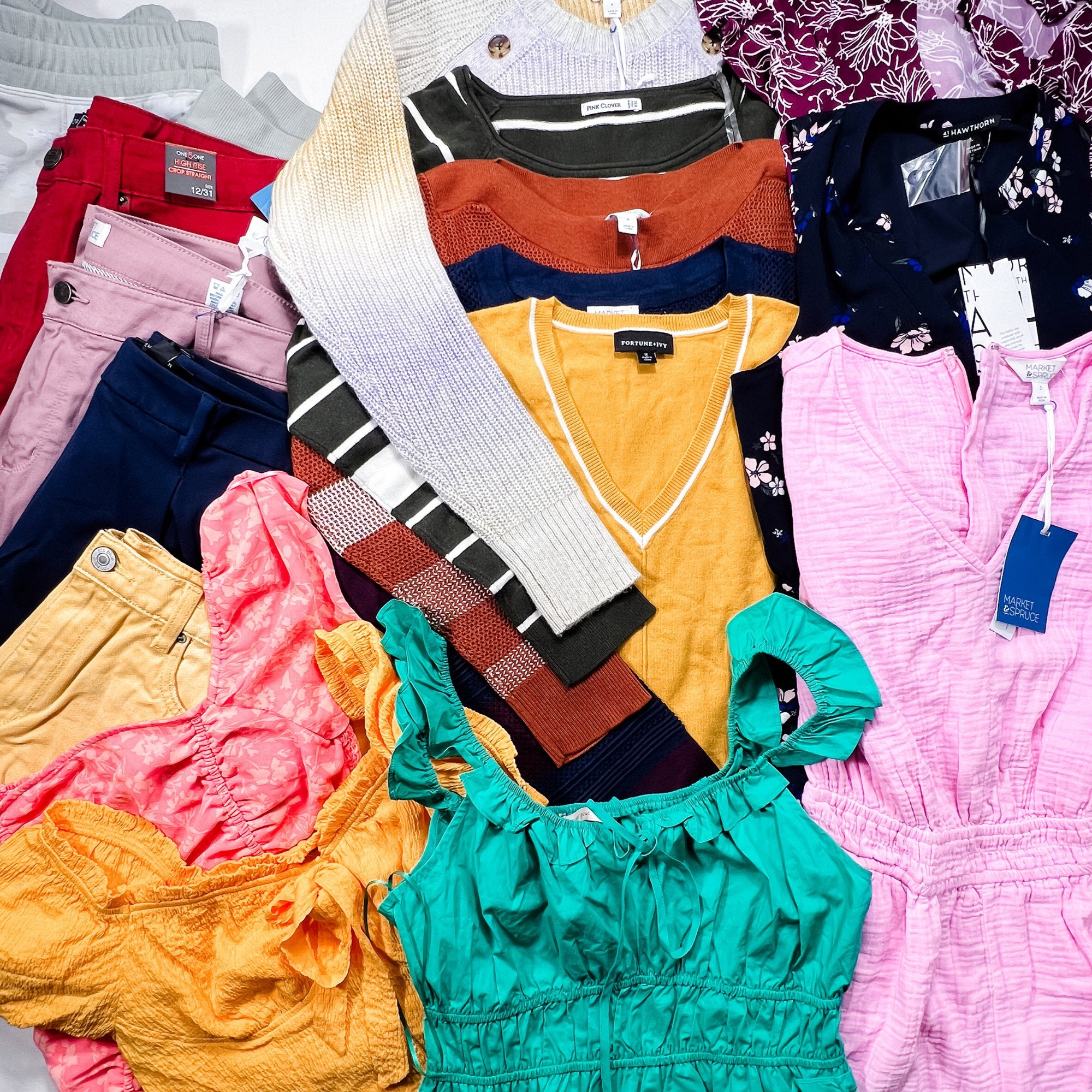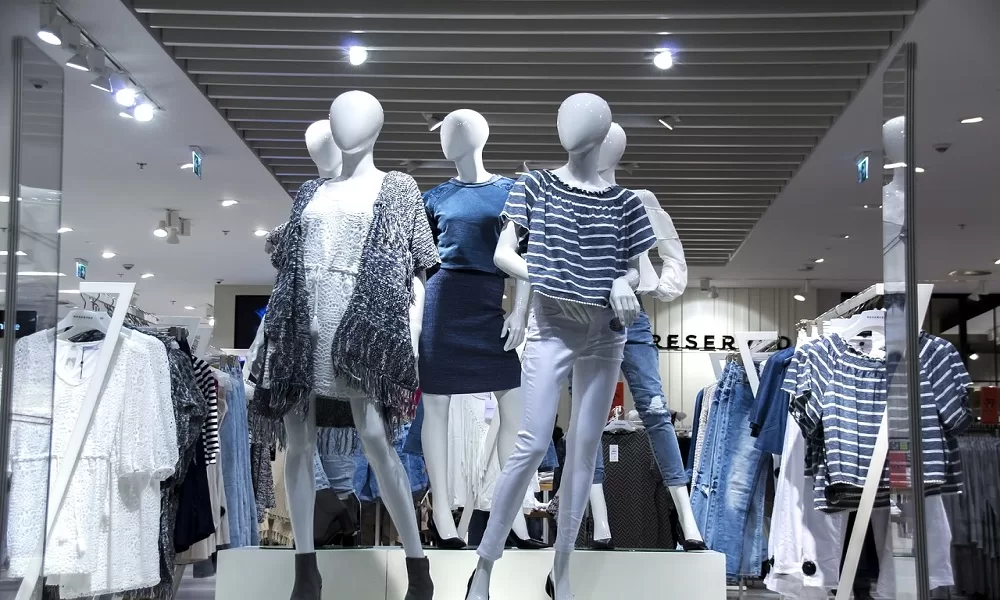How Branded Clothing Uses Fabric to Match Season and Occasion
How Branded Clothing Uses Fabric to Match Season and Occasion
Blog Article
The Significance of Sustainable Clothes: Just How It Impacts the Environment and Your Wardrobe
Sustainable clothes is increasingly recognized for its vital function in minimizing the environmental influence of the quick fashion business. By concentrating on environment-friendly materials and ethical production methods, it resolves pressing ecological worries. This change not only profits the world but additionally influences consumer choices, bring about a much more thoughtful strategy to wardrobe administration. Recognizing these dynamics increases essential inquiries regarding fashion's future and personal responsibility fit it.
The Ecological Impact of Quick Style

Advantages of Sustainable Materials
Sustainable materials offer substantial benefits, specifically with green textile choices that decrease ecological damage. These materials also demonstrate sturdiness and durability, reducing the need for frequent replacements. Consequently, they add to an extra sustainable garment industry and promote responsible customer habits.
Eco-Friendly Fabric Choices
While the style sector has actually long been connected with rapid patterns and ecological damage, the surge of environment-friendly fabric options provides a transformative chance. Lasting materials such as natural cotton, hemp, and Tencel have actually gained popularity because of their lower eco-friendly influence. These materials are usually generated without hazardous chemicals and call for less water, lowering their carbon footprint - Branded Clothing. Furthermore, numerous green textiles are naturally degradable, contributing to a round economy by decreasing waste. Selecting sustainable products not just supports eco responsible methods yet additionally promotes much healthier communities. As customers become a lot more familiar with their purchasing power, the need for environmentally friendly materials motivates brand names to introduce and take on even more lasting manufacturing approaches, ultimately benefiting the planet and future generations
Toughness and Long Life Advantages
Several customers are significantly acknowledging the toughness and long life advantages of lasting products in their apparel selections. Unlike conventional fabrics, lasting products such as natural cotton, hemp, and recycled polyester are crafted to hold up against damage, resulting in garments that last longer. This minimized frequency of replacement not just conserves customers money in time however also decreases waste created by quick fashion. Furthermore, sustainable clothes typically utilizes green production methods that improve textile stamina, adding to a reduction in the general carbon footprint. By purchasing sturdy garments, consumers can cultivate an extra lasting closet while taking pleasure in top notch pieces that maintain their visual and performance over time. Sturdiness and durability stand as essential advantages of selecting sustainable materials.
Reducing Waste With Lasting Practices
Decreasing waste in the apparel industry can be attained through innovative practices such as upcycling and repurposing products. In addition, embracing minimal wardrobe strategies urges consumers to prioritize top quality over quantity, inevitably reducing apparel usage. Together, these techniques contribute greatly to an extra sustainable garments design.
Upcycling and Repurposing Materials
Upcycling and repurposing products have actually become cutting-edge techniques in the fashion business, changing thrown out textiles right into valuable brand-new items. This method not just reduces waste yet additionally encourages imagination and originality in clothing design. By taking old garments and products, developers can create distinct items that mirror individual style while decreasing the need for new resources. In addition, upcycling usually requires less power and water contrasted to traditional manufacturing procedures, significantly reducing the ecological impact of fashion. As consumers end up being a lot more familiar with sustainability, the popularity of upcycled garments proceeds to climb, advertising a circular economy. Ultimately, these methods add to a more lasting future, where style prioritizes ecological health over rapid manufacturing and intake.

Minimal Wardrobe Methods
As people progressively seek to reduce their ecological influence, embracing minimalist wardrobe techniques has acquired traction as an efficient approach to sustainable style. These strategies highlight high quality over quantity, encouraging consumers to curate a smaller sized collection of functional, long lasting garments. By concentrating on classic pieces that can be blended and matched, individuals can minimize the regularity of purchases and inevitably reduce waste.Additionally, minimalism advertises conscious usage, urging customers to assess the honest and environmental ramifications of their selections. This technique not only fosters an extra sustainable lifestyle yet likewise streamlines day-to-day decision-making regarding clothing. As people welcome minimalist principles, they add to a fashion society that values sustainability and accountable consumerism, eventually causing a more eco-conscious culture.
The Role of Moral Labor in Sustainable Style
While numerous customers are significantly familiar with the ecological consequences of their garments choices, the relevance of ethical labor techniques in sustainable style can not be overlooked. Honest labor encompasses reasonable salaries, secure working conditions, and regard for employees' legal rights, creating the backbone of liable fashion manufacturing. Brands that prioritize moral labor not only uplift areas but also established a criterion for accountability in the industry.Moreover, the combination of ethical practices cultivates openness, enabling customers to make informed choices regarding their acquisitions. This technique contrasts sharply with fast fashion's exploitative labor designs, which frequently prioritize profit over individuals. By supporting firms dedicated to honest labor, consumers add to a system that values human self-respect alongside environmental sustainability. As a result, honest labor is not simply an add-on; it is important to the wider objective of sustainable fashion, making certain that the pursuit for eco-friendliness does not come at the expenditure of human civil liberties.
The Effect of Lasting Clothes on Carbon Emissions
Lasting clothes has the possible to considerably decrease carbon discharges related to the fashion market. Conventional garment manufacturing adds notably to view it greenhouse gas discharges, largely as a result of energy-intensive production processes and using non-renewable resources. In contrast, lasting style concentrates on eco-friendly products, such as organic cotton or recycled fibers, which frequently require much less energy to produce.Moreover, you could try this out lasting brands tend to embrace much more reliable manufacturing techniques, lessening waste and lowering general emissions. By focusing on toughness and timeless style, lasting clothes urges consumers to purchase much less regularly, further minimizing the carbon footprint related to overconsumption.Additionally, many lasting brands are dedicated to openness in their supply chains, allowing customers to make educated selections that line up with their worths. Ultimately, moving in the direction of lasting clothes can cause a considerable reduction in carbon exhausts, adding to a healthier world and an extra sustainable future for the fashion market.
Sustaining Neighborhood Economic Climates With Lasting Choices
The shift towards lasting clothing not only addresses environmental worries yet additionally significantly benefits neighborhood economies. By choosing sustainable fashion, consumers commonly sustain neighborhood craftsmens and small companies, boosting area resilience. These enterprises usually run on a smaller range, focusing on craftsmanship and ethical techniques over mass production.Investing in locally made lasting garments cultivates job development and stimulates economic development within areas. As customers end up being more knowledgeable about the environmental influence of their acquisitions, they significantly look for products that reflect their worths. This need urges local manufacturers to take on lasting techniques, adding to a circular economy.Moreover, sustaining neighborhood organizations lowers transport discharges, lining up with eco-conscious consumer behavior. The interconnectedness of sustainable clothing and neighborhood economic situations emphasizes the necessary function that individual selections play in promoting both financial and ecological health and wellness. By fostering these neighborhood connections, communities can prosper while likewise functioning in the direction of a more lasting future.
Changing Your Closet: Tips for a Sustainable Wardrobe
As individuals look for to minimize their environmental influence, changing a storage room right into a sustainable anonymous closet becomes a necessary step. One effective strategy is to assess existing garments, maintaining only products that are used consistently and that align with sustainability objectives. Focusing on high quality over amount is important; spending in resilient items from environment-friendly brand names can significantly reduce waste.Additionally, integrating second-hand products can revive a closet while reducing ecological damages. Organizing clothing swaps with pals or giving away unused things can further promote sustainability.When shopping, individuals need to seek materials that are organic, recycled, or eco-friendly, and avoid fast fashion sellers - Branded Clothing. Ultimately, exercising mindful consumption by attentively considering each acquisition can contribute to a much more sustainable way of life. By carrying out these ideas, one can develop a closet that mirrors individual design while sustaining ecological stewardship
Regularly Asked Concerns
Exactly How Can I Determine Sustainable Clothes Brands?
To identify sustainable clothes brand names, one must research materials made use of, inspect for qualifications like Fair Trade, and examine the brand name's openness concerning their production procedures, labor techniques, and environmental impact, making sure honest and environmentally friendly techniques are focused on.
What Are the Costs Associated With Lasting Style?
The costs related to lasting style can vary considerably. Greater manufacturing expenses, ethical sourcing, and green products usually bring about boosted retail costs, which may deter some customers while attracting environmentally aware buyers.
Can Sustainable Apparel Be Fashionable and trendy?
Sustainable clothing can certainly be elegant and stylish. Designers significantly prioritize cutting-edge products and honest production approaches, showing that style and sustainability can exist together. Customers now have varied options that blend aesthetic appeals with environmental awareness.
Exactly How Does Laundering Clothing Affect Their Sustainability?
Cleaning clothes considerably impacts sustainability by consuming water and energy, adding to pollution, and triggering microplastic launch. Frequent washing can break down fabrics, shortening their life expectancy and increasing the requirement for substitutes, inevitably intensifying ecological problems.
What Is the Life-span of Sustainable Garments Contrasted to Rapid Fashion?
The lifespan of sustainable apparel normally exceeds that of quick style items, commonly long-term several years due to high quality materials and workmanship. On the other hand, rapid style garments might degrade swiftly, demanding more regular substitutes. Lasting apparel is increasingly recognized for its vital function in minimizing the ecological effect of the rapid style market. While lots of customers are significantly mindful of the ecological repercussions of their garments options, the value of moral labor methods in sustainable style can not be ignored. Branded Clothing. Sustainable clothes has the potential to significantly reduce carbon emissions associated with the fashion sector. In comparison, lasting style focuses on environmentally friendly products, such as natural cotton or recycled fibers, which usually need less power to produce.Moreover, lasting brands tend to take on a lot more effective manufacturing practices, minimizing waste and decreasing general emissions. By focusing on longevity and ageless design, lasting apparel urges customers to purchase much less often, further lowering the carbon impact associated with overconsumption.Additionally, several sustainable brand names are dedicated to openness in their supply chains, making it possible for customers to make educated selections that align with their worths
Report this page